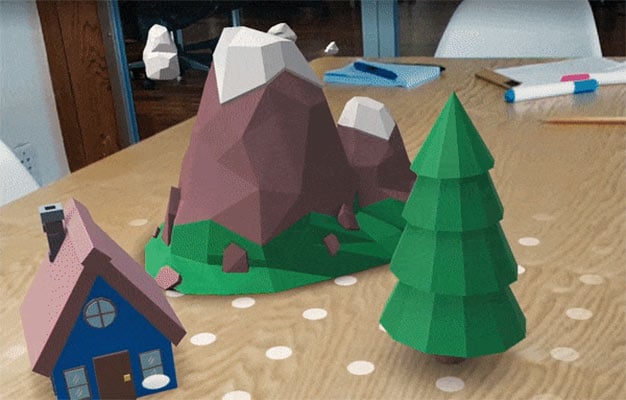Google ARCore Brings Android Augmented Reality To The Masses On Mainstream Devices
Android is easily the largest mobile platform in the world far surpassing Windows Mobile with its scant 0.1% market share globally. Android also easily dominates iOS, which holds 14.7% market share according to research firm IDC. There are over two billion active Android devices and Google has announced that its ARCore SDK is now ready for the limelight and will bring augmented reality to the masses using existing and future Android smartphones.

The SDK is available for devs to start experimenting with right now. David Burke, VP, Andorid Engineering, wrote, "We've been developing the fundamental technologies that power mobile AR over the last three years with Tango, and ARCore is built on that work. But, it works without any additional hardware, which means it can scale across the Android ecosystem. ARCore will run on millions of devices, starting today with the Pixel and Samsung's S8, running 7.0 Nougat and above."
The Android team is targeting 100 million devices by the end of the preview it is running, and it is working directly with the biggest names in the Android ecosystem. That includes companies like Samsung, Huawei, LG, ASUS and others. ARCore works closely with Java and OpenGL, Unity, and Unreal with a main focus on three different functions. One of the focus points is motion tracking using the camera in the smartphone or tablet to find feature points in the room. The system then combines that with IMU sensor data and ARCore is able to determine the position and orientation of the phone as it moves so that virtual objects are placed accurately.
ARCore is also able to detect horizontal surfaces using the same feature points used for motion tracking. The software does this horizontal surface detection because it is common for virtual items to be placed on the floor or a table. Another focus point for ARCore is light estimation by observing the ambient light in a room. This tech makes it possible for the developers to light virtual objects in ways that will match the lighting in the surroundings to make the item look more realistic.
Burke wrote, "Alongside ARCore, we've been investing in apps and services which will further support developers in creating great AR experiences. We built Blocks and Tilt Brush to make it easy for anyone to quickly create great 3D content for use in AR apps. As we mentioned at I/O, we're also working on Visual Positioning Service (VPS), a service which will enable world scale AR experiences well beyond a tabletop. And we think the Web will be a critical component of the future of AR, so we're also releasing prototype browsers for web developers so they can start experimenting with AR, too. These custom browsers allow developers to create AR-enhanced websites and run them on both Android/ARCore and iOS/ARKit."
Burke promises that the Android team will have more to share later this year on ARCore. Anyone who wants to play with the ARCore SDK can download it now via GitHub.

